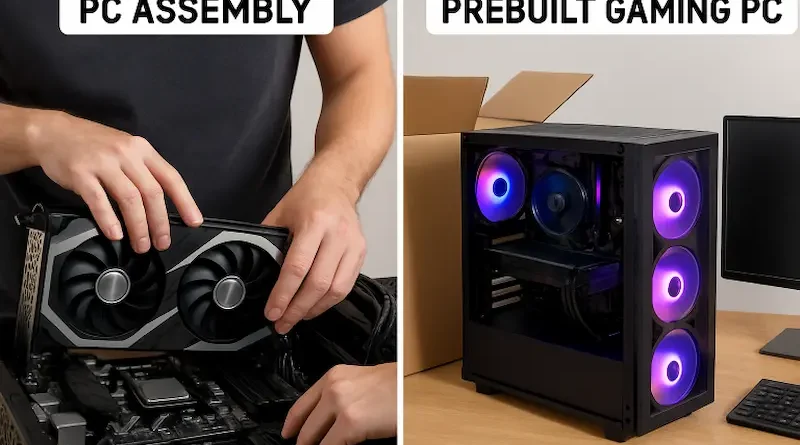Building a Gaming PC vs. Buying Prebuilt: Which Is Right for You?
Getting into PC gaming is more approachable—and more exciting—than ever before, but one major question remains for many newcomers and enthusiasts alike: should you invest the time and effort into building your own rig, or purchase a prebuilt system ready out of the box? Both options have passionate supporters, and each approach carries unique advantages and downsides. Whether you’re after the thrill of total customization or the confidence of manufacturer warranties, your choice will shape your gaming experience for years to come.
It’s easy to be tempted by the convenience of a prebuilt PC, which saves you from the sometimes daunting process of researching and assembling components. Brands like CyberPowerPC offer a range of systems tailored for both casual gamers and hardcore enthusiasts, supporting buyers with expert assembly, comprehensive support, and expedited shipping. Meanwhile, building a PC lets you control your investment down to each cable, component, and LED, potentially saving money and creating a machine that matches your personality and play style.
The right decision depends on aligning your budget, preferences, and skill level with what each route has to offer. Some users crave the satisfaction of building and upgrading, while others want to plug in and play with full manufacturer support.
As the gaming community continues to grow, the options for PC hardware have also expanded. According to a recent TechRadar guide, both prebuilt and DIY systems can offer comparable performance, but the context of your choice matters. Taking the time to weigh what’s most important for your needs will not only improve your gaming but could ultimately save you money and frustration.
Customization and Control
One of the primary draws of building your own PC is the freedom to cherry-pick every component that goes into your machine. Whether you want a high-end graphics card, a specific case design, or advanced cooling options, building from scratch means your setup matches your specs and style. This level of flexibility empowers enthusiasts to prioritize features like noise reduction, overclocking, or RGB lighting.

Learning Curve and Resources
However, with control comes responsibility. Navigating the maze of compatible parts, chipset generations, and form factors often requires research or guidance. Thankfully, resources like Tom’s Hardware’s PC building tutorials can help beginners get started and avoid common pitfalls. If you’re tech-curious and enjoy learning new skills, building a PC can be a rewarding hands-on project.
Cost Considerations
Price is frequently cited as a benefit of building your own rig. Buying individual components allows you to shop sales and avoid paying for parts or software you don’t want. However, hidden costs can arise: you may need special tools or unexpectedly incur higher costs for parts due to fluctuating prices or compatibility issues. Some builders also overlook “soft” costs, such as the time spent researching or waiting for shipping.
Prebuilt PCs usually cost more upfront. This premium often reflects the cost of assembly labor, technical support, bundled warranties, and sometimes pre-installed software or games that add convenience. While you may not get the absolute lowest price-to-performance ratio, the reduction in troubleshooting and guarantee of a working product upon delivery can make the investment worthwhile for many.
Time and Effort
Building your own system isn’t simply about connecting a few parts—it requires careful handling of sensitive electronics, cable management, and software installation. The process can be deeply satisfying for hobbyists, but intimidating for novices and time-strapped professionals. Mistakes can happen, and resolving issues may require hours of research or consultations with technical support.
Prebuilt systems eliminate these obstacles, arriving ready for use within minutes of unboxing. The operating system and drivers are typically pre-installed and tested. This plug-and-play convenience helps newcomers, students, or busy gamers get online and in-game with minimal friction.
Warranty and Support
A major upside of prebuilt PCs is unified customer support. Should anything go wrong, you’ll have a single point of contact—often with a straightforward repair or replacement process. This is especially valuable for less tech-savvy users or those who use their PC for both work and play.
DIY builders, on the other hand, handle each component’s warranty individually. If a hardware failure occurs, it’s your responsibility to diagnose the faulty part and work with the relevant manufacturer. For those comfortable with troubleshooting, this isn’t necessarily a drawback—but for others, it can mean added hassle and downtime while repairs are coordinated.
Performance and Upgradability
Performance-wise, both custom-built systems and high-quality pre-built systems can deliver top-tier results. DIY builders can often squeeze better performance by allocating budget strategically—perhaps prioritizing a stronger graphics card or investing in a larger SSD. Over time, upgrading your self-built system is often more straightforward, as you’ll already know the case layout and cable routing.
Prebuilt systems can offer fantastic initial performance, but upgradability may be limited. Some manufacturers use proprietary parts, non-standard power supplies, or compact cases that restrict access to components. If regular upgrades are in your plans, it’s essential to research a prebuilt’s specs and compatibility before making a purchase.
Conclusion
Ultimately, the choice between building and buying boils down to your personal priorities. If you’re excited by the prospect of total control, potential savings, and the thrill of DIY, building your own gaming PC can be hugely rewarding. For those who value reliability, minimal hassle, and robust support, a prebuilt system may be the smarter move. Whichever you choose, understanding the trade-offs ensures you’ll enjoy your gaming PC for years to come.
Visit the rest of the site for more interesting and useful articles.

